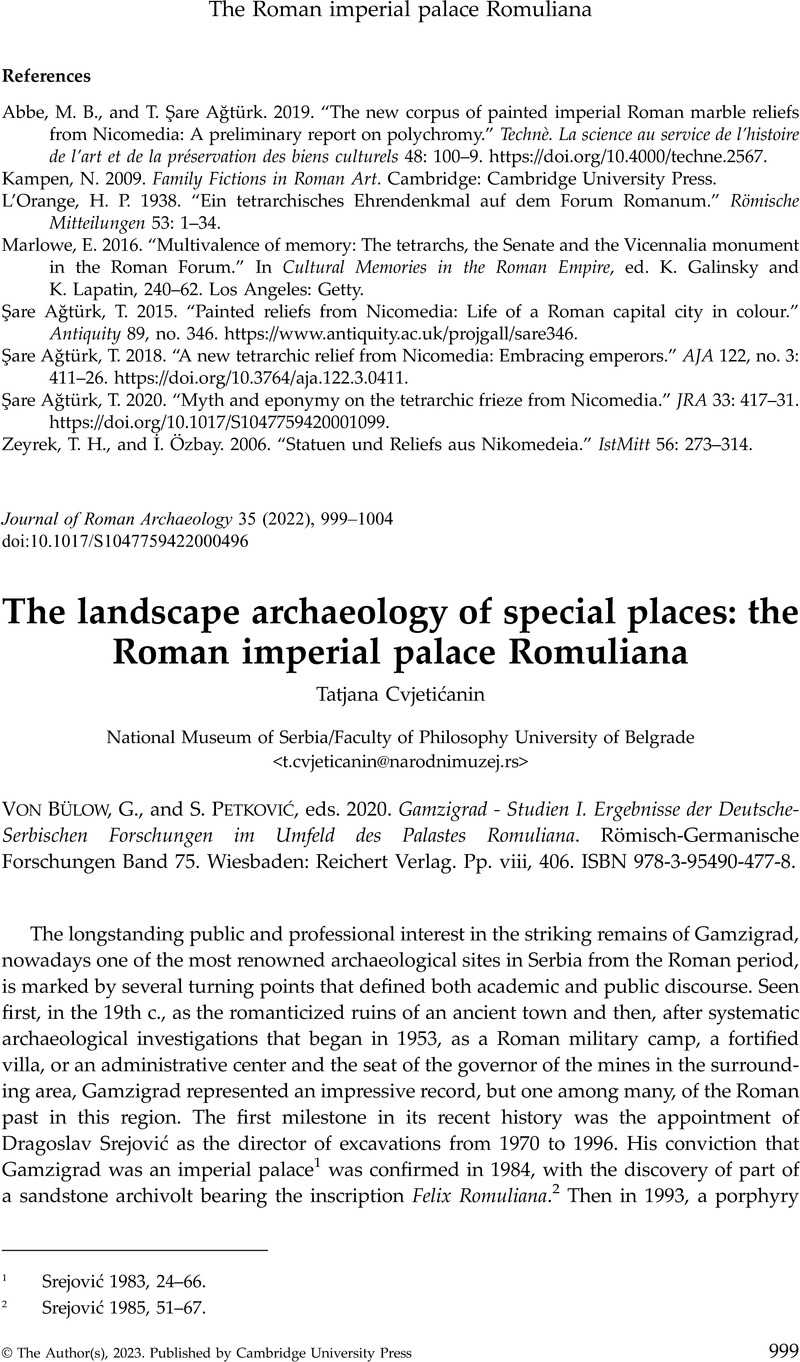No CrossRef data available.
Article contents
The landscape archaeology of special places: the Roman imperial palace Romuliana - G. Von Bülow, and S. Petković, eds. 2020. Gamzigrad - Studien I. Ergebnisse der Deutsche-Serbischen Forschungen im Umfeld des Palastes Romuliana. Römisch-Germanische Forschungen Band 75. Wiesbaden: Reichert Verlag. Pp. viii, 406. ISBN 978-3-95490-477-8.
Review products
G. Von Bülow, and S. Petković, eds. 2020. Gamzigrad - Studien I. Ergebnisse der Deutsche-Serbischen Forschungen im Umfeld des Palastes Romuliana. Römisch-Germanische Forschungen Band 75. Wiesbaden: Reichert Verlag. Pp. viii, 406. ISBN 978-3-95490-477-8.
Published online by Cambridge University Press: 23 January 2023
Abstract
An abstract is not available for this content so a preview has been provided. Please use the Get access link above for information on how to access this content.

- Type
- Book Review
- Information
- Copyright
- Copyright © The Author(s), 2023. Published by Cambridge University Press
References
Kuzmanović, Z., and Mihajlović, V. D.. 2015. “Roman emperors and identity construction in modern Serbia.” Identities 22, no. 4: 416–32.CrossRefGoogle Scholar
Srejović, D. 1983. “Carski dvorac.” In Gamzigrad. Kasnoantički carski dvorac, ed. Srejović, Đ. Janković, A. Lalović, and V. Jović, , 24–95. Beograd: Srpska akademija nauka i umetnosti.Google Scholar
Srejović, D. 1985. “Felix Romuliana. Galerijeva palata u Gamzigradu.” Starinar 36: 51–67.Google Scholar
Srejović, D., ed. 1993. Roman Imperial Towns and Palaces in Serbia. Belgrade: Serbian Academy of Sciences and Arts.Google Scholar
Vranić, I. 2022. Helenizacija u novom ključu. Potrošnja grčke firnisovane keramike, “umrežavanje” i kulturne promene na Krševici, V-III vek pre nove ere. Beograd: Arheološki institut i Narodni muzej Srbije.Google Scholar
World Heritage Serbia. 2017. Belgrade: Republic institute for the protection of the monuments of culture. https://www.heritage.gov.rs/cirilica/Download/Svetska__bastina__Srbija__World__heritage__Serbia__book.pdf.Google Scholar


